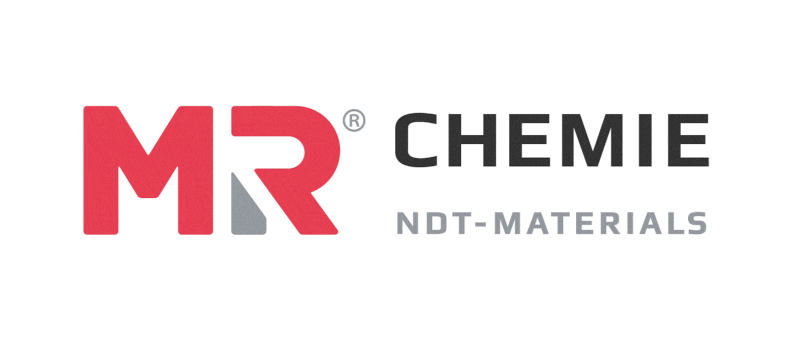

MR®222 is an ECOLINE, visible red (under white light) and bright fluorescent orange (under UV), dry red ferromagnetic powder designed to be used with oil or water (along with conditioner) which is used for Magnetic Particle Testing (MPT). MR222 particles are manufactured for an optimum sensitivity, excellent discontinuity definition, colour with minimal to nil background and magnetic characteristics for wet method visible MPT. It detects surface and slightly sub surface discontinuities such as cracks, inclusions, seams, tears, laps, flakes and other welding defects.
| SKU | Pack Size | Case Size |
|---|---|---|
| 2511-0027 | Bulk 1kg | 1 |
| Properties | Appearance – free flowing red magnetic powder Chemical Composition – mixture of magnetic powder; pigments & additives Basis – ferro magnetic powder Colour in visible light – red Colour in UV light – fluorescent orange Odour – Odourless |
| Approvals | ASME Code V; Art. 7 DIN ISO 9934 (BS 5044) AMS 3042 ASTM E 709 ASTM E1444/1444M ASME RCC-M |
| Particle Size | 8 µm * *as determined by industrial typical method for measuring particle size |
| SAE Sensitivity | 7 ** **as per indications on Ketos ring as defined in ASTM E1444/1444M |
| Sediment | 1.2 – 2.4 ml/100ml (1h) *** according to ASME ***with a dilution of 10-20 gm / L (in oil) |
| Recommended Usage | NDT Method – Magnetic Particle Testing (wet method) Application – unfinished to finished surfaces Usage Temperature – 41°F to 131°F / +5 °C to +52 °C Storage Temperature – 41°F to 113°F / +5 °C to +45 °C |
| Reference Test Blocks | Reference test block Type 1 (MTU No.3) Reference test block Type 2 Magnetic Field Indication acc. to ASTM E709 (Pie Guage) Test body according to Prof. Berthold Quantitative Quality Indicators Shims (QQI as per AS5371) Magnetic stripe card Type 2000 ASTM centrifuge tube (for fluorescent) acc. to ASME Code V; Art. 25; SE-709 |
Magnetic particle inspection (MPI) is a non-destructive testing (NDT) method used to detect surface and slightly subsurface cracks in ferromagnetic materials such as iron, steel, and nickel. The process involves magnetizing the part to be inspected and then applying appropriate magnetic particles in the form of a dry powder or suspension to the surface of the part. The magnetic particles are attracted to areas of flux leakage, which are areas where the magnetic field is distorted by the presence of a crack or other defect creating a visible indication that can be used to identify and evaluate the nature and extent of the defect.
The application of the magnetic powder creates a visible indication of the location and shape of the crack or other defect. The powder accumulates at the location of the defect, forming a visible indication or "magnetic particle indication." This indication is then examined by a trained inspector using ultraviolet light or other illumination to identify the precise location, size, and orientation of the defect.
| Bulk | Aerosol |
|---|---|
 |